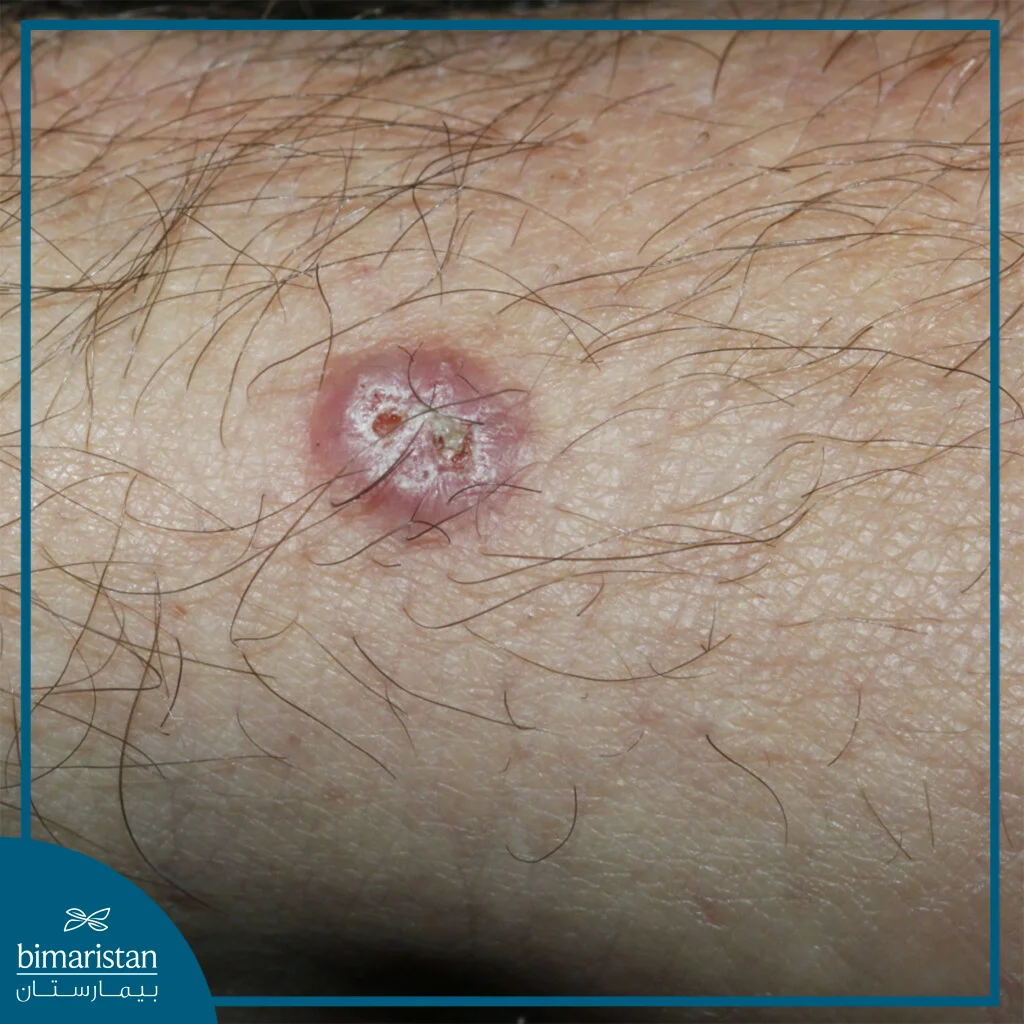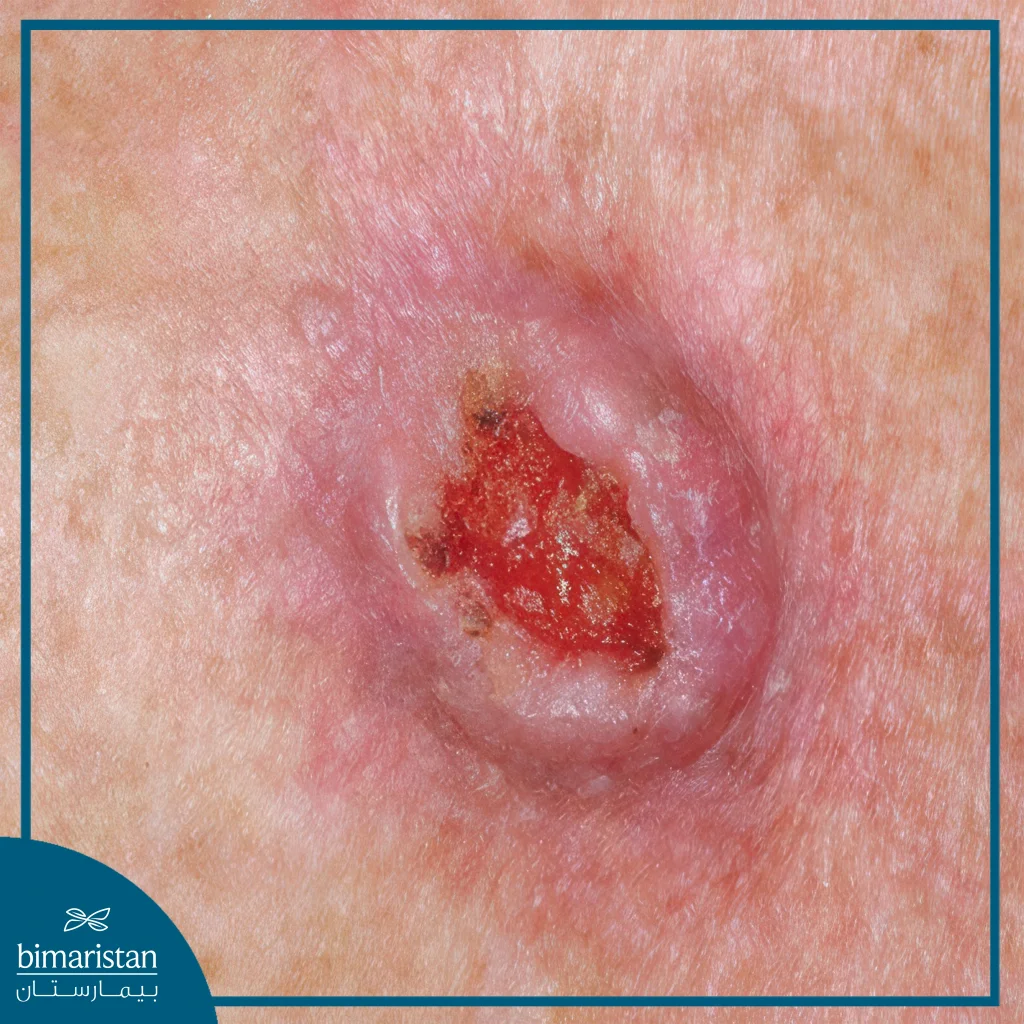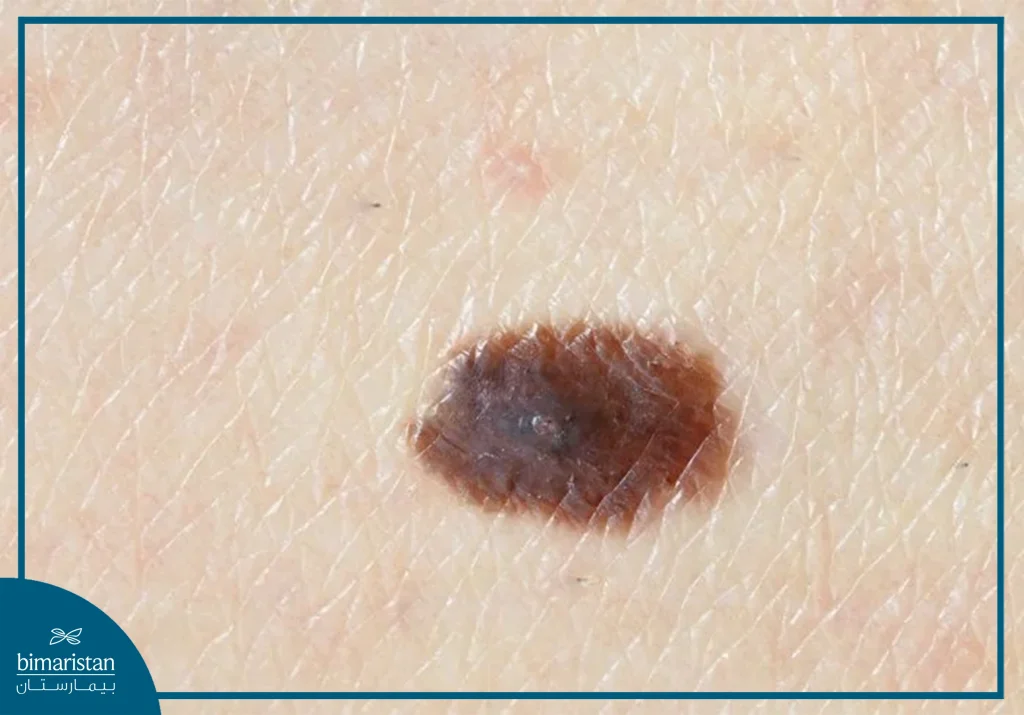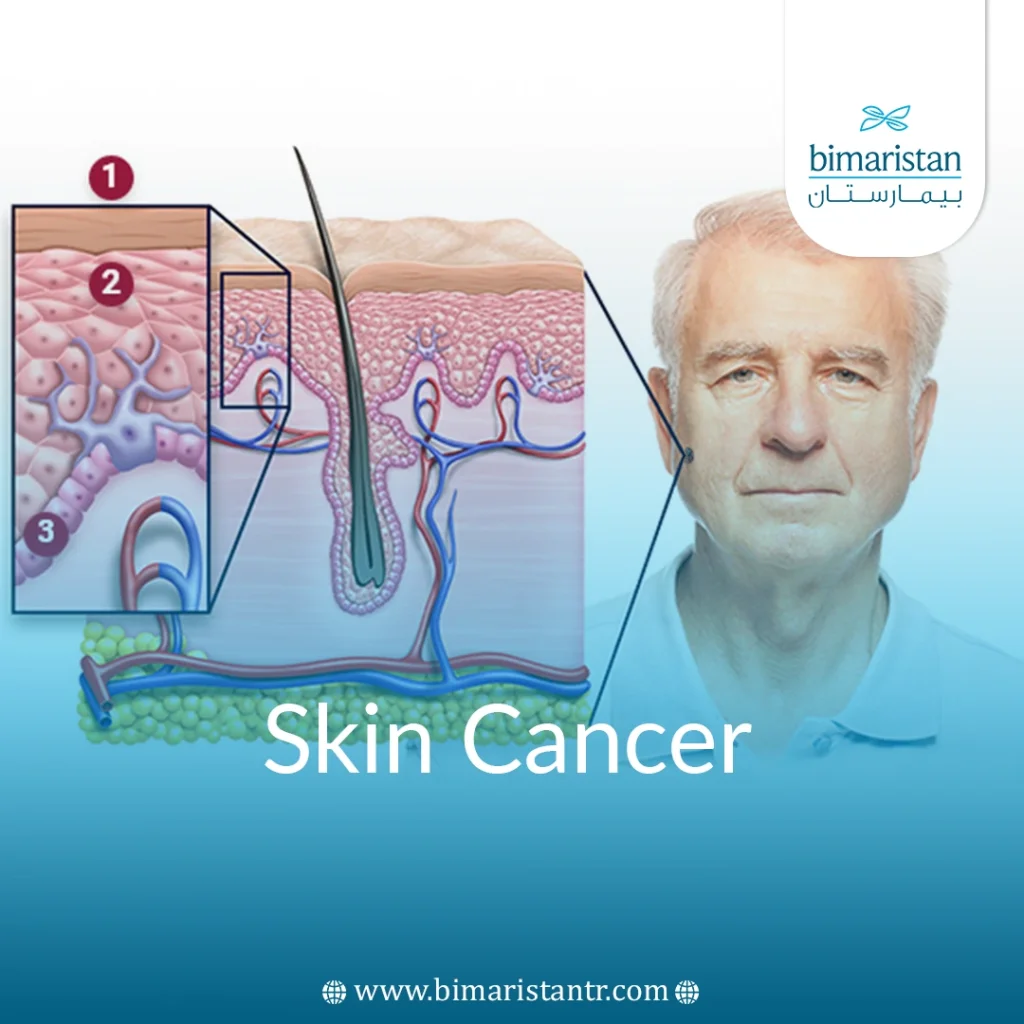Skin cancer is one of the most common types of cancer worldwide. It has many types and often affects areas exposed to the sun. Early detection increases the chances of a complete cure for skin cancer in Turkey.
What is skin cancer?
The abnormal growth of skin cells with uncontrolled cell multiplication is known as skin cancer.
This cancer often affects areas most exposed to the sun, such as the face, scalp, neck, or ears. However, it is not limited to these areas; it can also develop in areas not exposed to the sun, such as the palms of the hands or the soles of the feet.
There are many types of this cancer, and the classification depends on the type of cells in which the cancer originates.
Skin cancer tends to be more common in white people, but it can affect people of all races.
According to a study conducted by the American Academy of Dermatology, skin cancer is the most common cancer in the United States, with one in five people experiencing it at least once in their lifetime.
What causes skin cancer (Risk factors)
The primary cause is excessive sun exposure. Sunlight damages the DNA of skin cells, leading to the development of abnormal, cancerous cells.
People with fair skin and blue eyes are more susceptible to skin cancer due to a lack of melanin pigment and increased susceptibility to sunburn.
Having a large number of freckles or moles also increases the risk. Having more than 100 moles in adults is considered a risk factor.
Risk factors associated with cancer include frequent contact with carcinogenic chemicals such as coal and tar. Additionally, a family history of this cancer increases an individual’s likelihood of developing it. A personal history of skin cancer also increases the risk of developing it again.
Types of skin cancer
Determining the type of cancer depends on the type of cells affected. This helps determine the treatment method used and the prognosis. There are three main types of skin cancer:
Basal cell carcinoma
Cancer arises from the basal cells in the skin. Basal cells produce new cells and replace dead cells.
Basal cell carcinoma is the most common skin cancer, often affecting sun-exposed areas such as the face and neck.
Squamous cell carcinoma
This type arises from the squamous cells in the skin. Squamous cells form a protective barrier and facilitate the diffusion of gases and small particles.
It is the second most common skin cancer after basal cell carcinoma. It is most often seen in sun-exposed areas of the body, but in some cases, it can also be found in areas not exposed to the sun, such as the genital area.
Melanoma
Melanoma is the most dangerous type of skin cancer. It develops from cells that produce melanin, the pigment responsible for skin and eye color.
Fortunately, melanoma accounts for only 1% of skin cancers, but despite its low prevalence, it remains the leading cause of cancer deaths.
Melanoma is an invasive, rapidly spreading cancer, so early detection and treatment are important before it spreads to other parts of the body.
Melanoma can develop anywhere on the body and can also affect the eyes. Men are more likely to develop melanoma on the upper back, while women are more likely to develop it on the legs.
Skin cancer symptoms
Recent skin changes are one of the most important symptoms indicating the possibility of a skin malignancy. The symptoms and signs vary depending on the type of cells in which the cancer originated. The following are the most important symptoms, depending on the type of cancer:
Basal cell carcinoma
- A small, pearly, smooth, or waxy bump is seen on the face or neck.
- A flat, red, pink, or brown lesion, usually on the arms or legs.
- Areas that appear as newly appearing skin scars.
- Scaly, low-centered ulcers that may bleed.

Squamous cell carcinoma
- A scaly, bleeding growth or bump
- A firm, red or pink nodule
- A sore that doesn’t heal or recurs frequently
- A flat, scaly, red area of skin

Melanoma
- A change in the appearance of a previous mole, whether in size or color
- A brown spot
- A new skin change
- Melanoma can appear anywhere on the body

Skin cancer treatment methods in Turkey
The treatment plan depends on the type of cancer, its stage, and whether it has spread to other areas of the body. The earlier treatment is initiated, the greater the chance of complete recovery.
Turkey has prioritized the treatment of various types of cancer, providing specialized centers equipped with the latest treatment methods and a specialized medical team that accompanies the patient step by step through their cancer treatment journey.
With regard to skin this cancer treatment, several treatment methods are available:
Cryotherapy in Turkey
Cryotherapy is used to treat small cancerous lesions or precancerous conditions (such as actinic keratosis).
The lesion is coated with a nitrogen solution, which freezes the lesion, causing it to fall off spontaneously. You can read more about cryotherapy.
Excisional surgery for skin cancer in Turkey
Surgical excision is performed to completely remove the cancerous lesion and a margin of healthy tissue surrounding it. If the lesion is widespread, a wide excision is recommended in some cases.
Chemosurgery (Mohs surgery)
This procedure is used to treat large, recurring lesions, especially in areas where we want to preserve as much skin as possible, such as the nose. It is an effective treatment for basal cell and squamous cell skin cancers.
This procedure is performed in several stages. The doctor gradually removes layers of skin from the tumor area, and each removed layer is examined under a microscope until a negative result is obtained and the removed layer is confirmed to be cancer-free. At this point, the doctor stops removing subsequent layers of skin.
This procedure removes the tumor while minimizing damage to healthy skin.
Electrocautery
After surgically removing most of the cancerous lesions, the doctor may destroy the remaining cancerous tissue using a needle-shaped electrical device to remove the remaining cancerous cells.
This method often treats basal cell skin cancer or precancerous lesions.
Radiation therapy
High-energy rays are used to kill cancer cells in the affected area. Radiation therapy is often used to treat skin cancer when surgery fails to completely remove the cancer.
Chemotherapy
Drugs that kill cancer cells. If the cancerous lesions are located on the surface layer of the skin, chemotherapy can be applied topically in the form of ointments. If the cancer has spread to other parts of the body, The cancer is treated with intravenous chemotherapy.
Photodynamic therapy
A modern treatment method used to manage skin lesions, it is not limited to treating skin cancer but can also be used to treat non-cancerous lesions such as acne, psoriasis, and other skin diseases. Read more about photodynamic therapy.
Immunotherapy
Immunotherapy activates the body’s immune system to combat cancer cells and contributes to the treatment of skin cancer.
Skin cancer prevention
The most important step in skin cancer prevention is avoiding prolonged sun exposure. This can be achieved by applying sunscreen, which helps reduce the incidence of sunburn, or wearing clothing that protects from sun exposure (hats). In addition, it is important to have regular skin examinations at home or by a dermatologist.
Sources:
